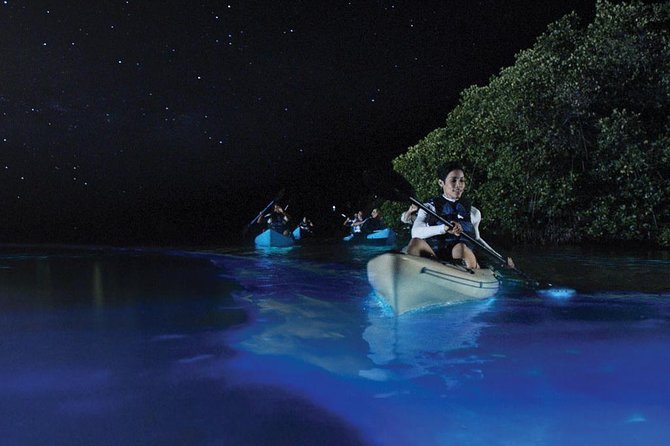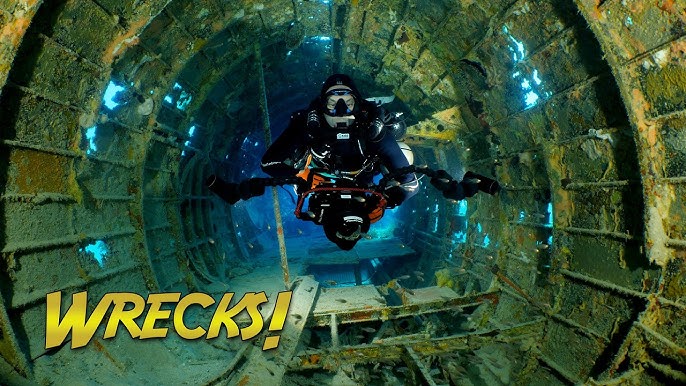Beyond the Beach: Unforgettable Sea Adventures for the Eco-Conscious Traveler

Are you yearning for more than just sunbathing on a crowded beach? Do you crave authentic travel experiences that connect you with the ocean in a meaningful way while treading lightly on our planet? Then you’ve come to the right place! At vistalocation.com, we believe travel should be transformative and sustainable. That's why we've curated a list of incredible sea adventures that go beyond the typical tourist traps. Get ready to dive into a world of wonder as we explore freediving in Raja Ampat, kayaking with bioluminescence in Mosquito Bay, and diving among WWII wrecks in Truk Lagoon, and contributing to science in the Galapagos Islands! These active and conservation-focused adventures are perfect for the eco-conscious traveler seeking unforgettable memories. Let’s dive in!
Section 1: Freediving and Underwater Photography in Raja Ampat, Indonesia
Raja Ampat, meaning "Four Kings," is an Indonesian archipelago renowned as a biodiversity hotspot. This remote paradise boasts some of the richest marine life on Earth. Imagine swimming alongside majestic manta rays, searching for elusive pygmy seahorses clinging to vibrant coral reefs, and witnessing an explosion of color and life with every breath.
Freediving in Raja Ampat is an experience that transcends mere observation. As you descend into the crystal-clear waters, a profound sense of weightlessness takes over. The vibrant colors of the coral gardens become more intense, and the sounds of the surface world fade away, replaced by the gentle whispers of the ocean. It's a truly immersive experience that connects you with the underwater world on a deeper level.
Capturing the Underwater Magic:
Underwater photography allows you to share the beauty of Raja Ampat with the world and preserve your memories of this incredible place. Here are some tips for capturing stunning images:
- Camera Recommendations: For beginners, the Olympus TG-6 is a great option due to its durability and ease of use. For more advanced photographers, a GoPro with an underwater housing offers versatility and high-quality video capabilities.
- Lighting Techniques: Natural light is your best friend! Try to shoot during midday when the sun is highest for maximum penetration. Avoid shooting directly into the sun, as this can result in washed-out images.
- Composition Advice: Apply the rule of thirds to create visually appealing compositions. Use leading lines, such as coral formations or schools of fish, to draw the viewer's eye into the image.
Responsible Freediving:
It's crucial to practice responsible freediving to protect the delicate ecosystem of Raja Ampat:
- Avoid Touching Coral: Coral is extremely fragile and easily damaged.
- Respect Marine Life: Observe animals from a distance and avoid disturbing their natural behavior.
- Proper Buoyancy: Maintain neutral buoyancy to prevent accidentally kicking up sediment or damaging the reef.
Section 2: Kayaking with Bioluminescence in Mosquito Bay, Puerto Rico
Mosquito Bay, located on the island of Vieques in Puerto Rico, is one of the brightest bioluminescent bays in the world. This natural wonder is caused by millions of tiny microorganisms called dinoflagellates, which emit a dazzling glow when disturbed.
Imagine paddling through the calm waters of Mosquito Bay on a moonless night. With every stroke of your paddle, the water erupts in a mesmerizing display of light. The ethereal glow illuminates your kayak and creates a surreal and unforgettable experience. The air is still, the stars are bright, and the water shimmers with an otherworldly luminescence.

Planning Your Kayaking Trip:
- Best Time to Visit: New moon nights offer the darkest skies and the most vibrant bioluminescence.
- Recommended Tour Operators: Choose eco-friendly tour operators committed to protecting the bay's ecosystem. Look for companies that use clear kayaks and avoid harsh chemicals.
- What to Wear: Wear dark clothing to minimize light pollution and enhance the visibility of the bioluminescence.
Protecting the Bay's Delicate Ecosystem:
- Choose Eco-Friendly Tour Operators: Support businesses that prioritize conservation.
- Avoid Touching the Water: The oils and chemicals on our skin can harm the dinoflagellates.
Section 3: Exploring Sunken WWII Wrecks in Truk Lagoon, Micronesia
Truk Lagoon, now known as Chuuk Lagoon, in Micronesia, is a diver's paradise and a historical treasure trove. This vast lagoon is home to a fleet of sunken Japanese warships and aircraft from World War II, offering a unique glimpse into the past.
Diving among the wrecks of Truk Lagoon is like stepping back in time. The wrecks, now encrusted with coral and teeming with marine life, serve as a poignant reminder of the war. Divers can explore the ghostly remains of ships, peering into cargo holds filled with artifacts and witnessing the resilience of nature as it reclaims these man-made structures. You might see the iconic bridge of the Fujikawa Maru, or the tanks and trucks still strapped to the decks of other vessels.

Safety Tips for Wreck Diving:
- Proper Training and Certification: Wreck diving requires specialized skills and knowledge. Ensure you have the necessary certifications before diving in Truk Lagoon.
- Dive with Experienced Guides: Local dive operators have extensive knowledge of the wrecks and the lagoon's conditions.
- Be Aware of Your Surroundings: Wrecks can be complex and disorienting. Pay attention to your depth, air supply, and navigation.
Preserving Historical Sites:
- Avoid Taking Souvenirs: Leave the artifacts for future generations to enjoy.
- Respect the Wrecks: These wrecks are historical monuments and should be treated with respect.
Section 4: Small-Ship Expedition Cruising in the Galapagos Islands for Citizen Science
The Galapagos Islands, a volcanic archipelago in the Pacific Ocean, are a living laboratory of evolution. This unique destination offers the opportunity to observe Darwin's finches, marine iguanas, giant tortoises, and other iconic species in their natural habitat. But beyond simply observing, you can contribute to the ongoing scientific research that helps protect this fragile ecosystem.
Traveling on a small-ship expedition cruise in the Galapagos Islands provides a more intimate and personalized experience than larger cruise ships. With smaller groups, you'll have more opportunities to interact with expert naturalists, explore remote islands, and participate in citizen science activities.
Citizen Science in Action:
- Marine Iguana Data Collection: Assist researchers in collecting data on marine iguana populations, including size, distribution, and behavior.
- Sea Turtle Nesting Site Monitoring: Help monitor sea turtle nesting sites, protecting eggs from predators and collecting data on hatching success.
- Bird Surveys: Participate in bird surveys, identifying and counting different species to track population trends. Organizations such as the Charles Darwin Foundation often collaborate with tour operators on these initiatives.
Benefits of Citizen Science:
These activities not only provide valuable data for scientists but also offer travelers a deeper understanding of the Galapagos Islands and the importance of conservation. It's a chance to give back to the environment and make a real difference.
Sustainable Tourism in the Galapagos:
- Choose GSTC-Certified Tour Operators: Select tour operators certified by the Global Sustainable Tourism Council (GSTC) to ensure they meet high standards of environmental and social responsibility.
- Participate in Beach Cleanups: Help remove plastic and other debris from beaches to protect marine life.
- Support Local Conservation Initiatives: Purchase locally-made goods and support businesses that contribute to conservation efforts.

Ready to embark on an unforgettable sea adventure? At vistalocation.com, we're committed to promoting sustainable tourism and providing authentic travel experiences. Explore these unique destinations and discover the wonders of the ocean while making a positive impact on the planet. Contact us today to start planning your next adventure!
[Link to Vistalocation.com]